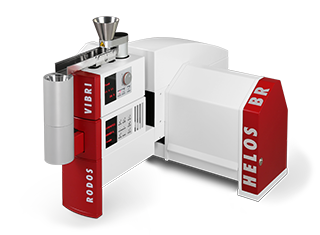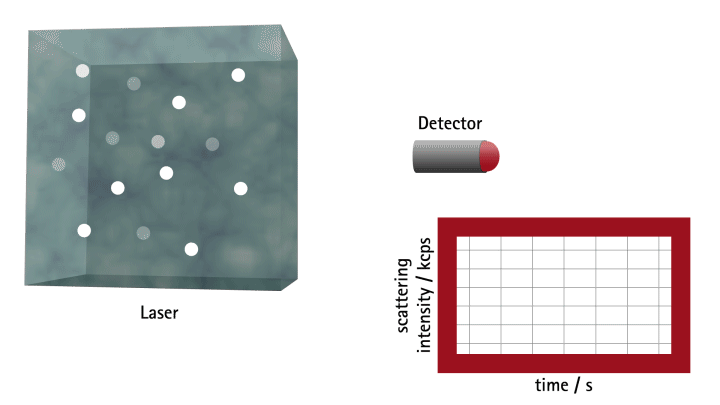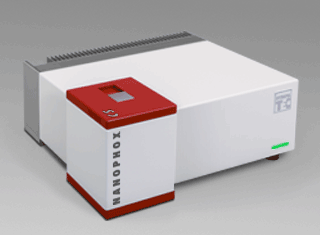Particle size and concentration of nano suspensions with dynamic light scattering
Dynamic light scattering (DLS) is a robust, simple and non-contact method for the measurement of particle size and particle size distributions from the nanometre to the submicron range. With high sensitivity it is ideally suited for detection of size changes even as a function of time. Process modifications occurring in seconds may be traced in real time. Within a measuring time of just a few minutes a very high number of particles is captured guaranteeing representative results.
For DLS analysis the hydrodynamic diameter is measured through optical detection of the Brownian molecular motion of particles in a liquid. The thermally agitated liquid molecules collide with the particles causing a random movement or diffusion. According to the Stokes-Einstein equation the diffusion velocities are inversely proportional to the size of the particles.
The Stokes-Einstein equation establishes the correlation between viscosity η and temperature T of the liquid and the size x of the assumed spherical particles and its velocity. This defines the diffusion coefficient D(x) which serves for calculation of the hydrodynamic particle diameter x. kB is the Boltzmann constant. If viscosity and temperature remain unchanged, fine particles move faster than coarse particles.
PCS as conventional technology
The principle of DLS traditionally is realised with Photon Correlation Spectroscopy (PCS) where one laser beam is transmitted through the sample. The particles interact with the laser light and generate single scattering waves. Due to optical interference of all partial waves an overall scattered wave is generated. The random motion (Brownian motion) of the particles changes the distance to each other and therefore the spatial superposition (interference) of the individual scattering waves. Thus the intensity of the entire scattering wave fluctuates between a minimum (destructive interference) and a maximum value (constructive interference) over time. With the help of a photodetector the scattered light intensity is monitored over time and then autocorrelated. The scattered signal is correlated with itself at different points in time (a comparison of the time lagged and the original function). The particle size distribution can be calculated with the correlation function, which follows an exponential decay.
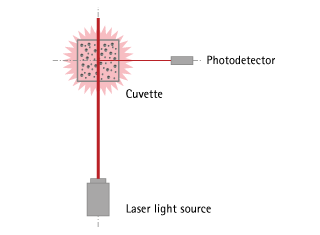
The size analysis with PCS is only valid for single scattered light. Samples of high solids concentration show a large proportion of multiple scattered light and the method reaches its limitations. To avoid incorrect data on particle distributions and to generate reliable measuring results, samples have to be diluted to a high ratio. In this way significant modifications of the particle properties are likely to occur.
Measuring fine particles | PCS
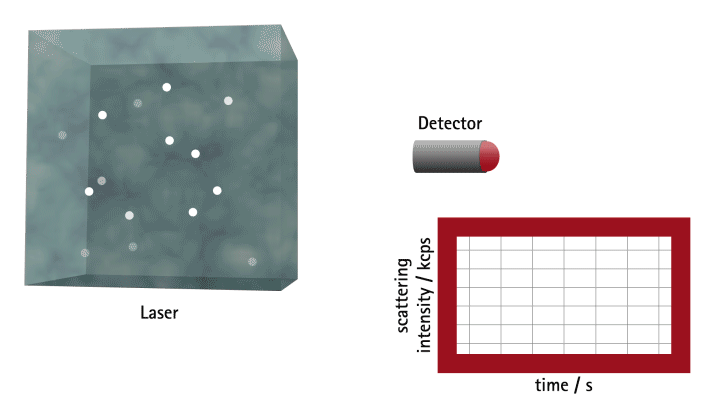
PCCS as key technology
By applying an innovative light scattering technique using Photon Cross-Correlation Spectroscopy (PCCS) we are able to provide concurrent measurements of particle size and stability in opaque suspensions and emulsions.
The outstanding technical features of 3D cross-correlation are the acquisition of two separately generated scattered light intensities and its cross-correlation. The single scattered light portion is thus separated from the multiple scattered part. A single laser beam is split into two separate beams of identical intensity and superimposed in one sample. Two independent scattering waves are then recorded with one detector for each wave, thus ensuring the exact signal interpretation.
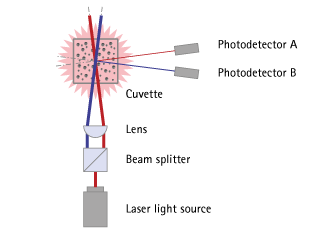
PCCS opens possibilities for analysis of nanoparticles in suspensions and emulsions with hundreds of times higher solids concentrations than before. The application of cross-correlation significantly enhances the concentration range for samples which can be measured with dynamic light scattering. Unwanted sample dilution can be avoided and particle size measurements in the original concentration of the respective application are possible.
The principle of dynamic light scattering traditionally is realised with Photon Correlation Spectroscopy (PCS) which uses auto-correlation of scattered light intensities in order to determine particle size distribution. However, this conventional technology requires extremely diluted samples in order to deliver meaningful results. The PCCS technology will help to eliminate the influence of multiple scattered light in principle. PCCS acquires two separately induced scattered light intensities. By the cross correlation of both signals the single scattered light, used for the correct calculation of the particle size distribtion, is filtered out from the multiple scattered light part. The single scattered light is thus separated from the multiple scattered light. Therefore, a single scattering signal is sufficient to start the particle size analysis.
The amplitude of the cross-correlation function, which depends on the proportion of multiple scattering, enables direct measurement of changes in particle number and particle size. Differentiated measurements of agglomeration and sedimentation behaviour as well as statements about special effects such as particle-particle interactions and viscosity changes of highly concentrated samples are thus possible.
Elimination of multiple scattering | PCCS
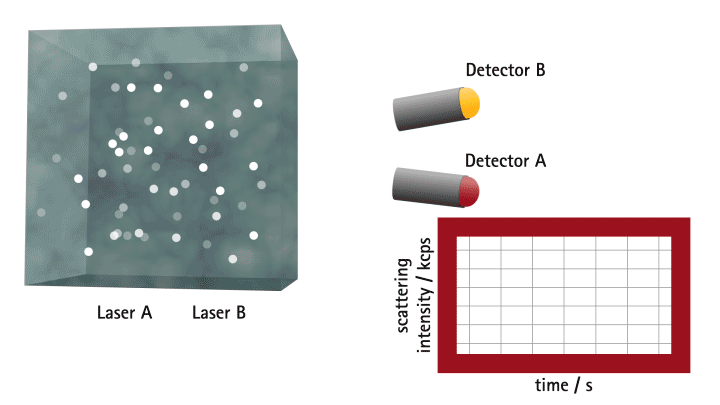
The polarisation-separated backscatter PCCS as the latest evolution of the PCCS
As the latest advance in PCCS, polarisation-separated backscatter PCCS (PsB PCCS) opens up even better elimination of multiple scattering effects in the analysis of nanoparticles in suspensions and emulsions by measuring backscattered light.
In this powerful technology, two perpendicularly and parallel polarised laser beams illuminate the same measurement volume. Two detectors at an angle of 176° receive two independent scattering signals, which are separated by polarisers in front of the detectors. To determine the particle size, the decoupled intensity patterns of the separate laser beams are then cross-correlated.
This combination of backscattering and polarisation separation delivers a new level of signal quality. The polarisation-separated scattering signals produce up to four times the cross-correlation amplitude and a significantly increased signal-to-noise ratio. Outstanding performance features manifest themselves in shorter measurement times and measurements of even higher sample concentrations with improved reproducibility and accuracy.







